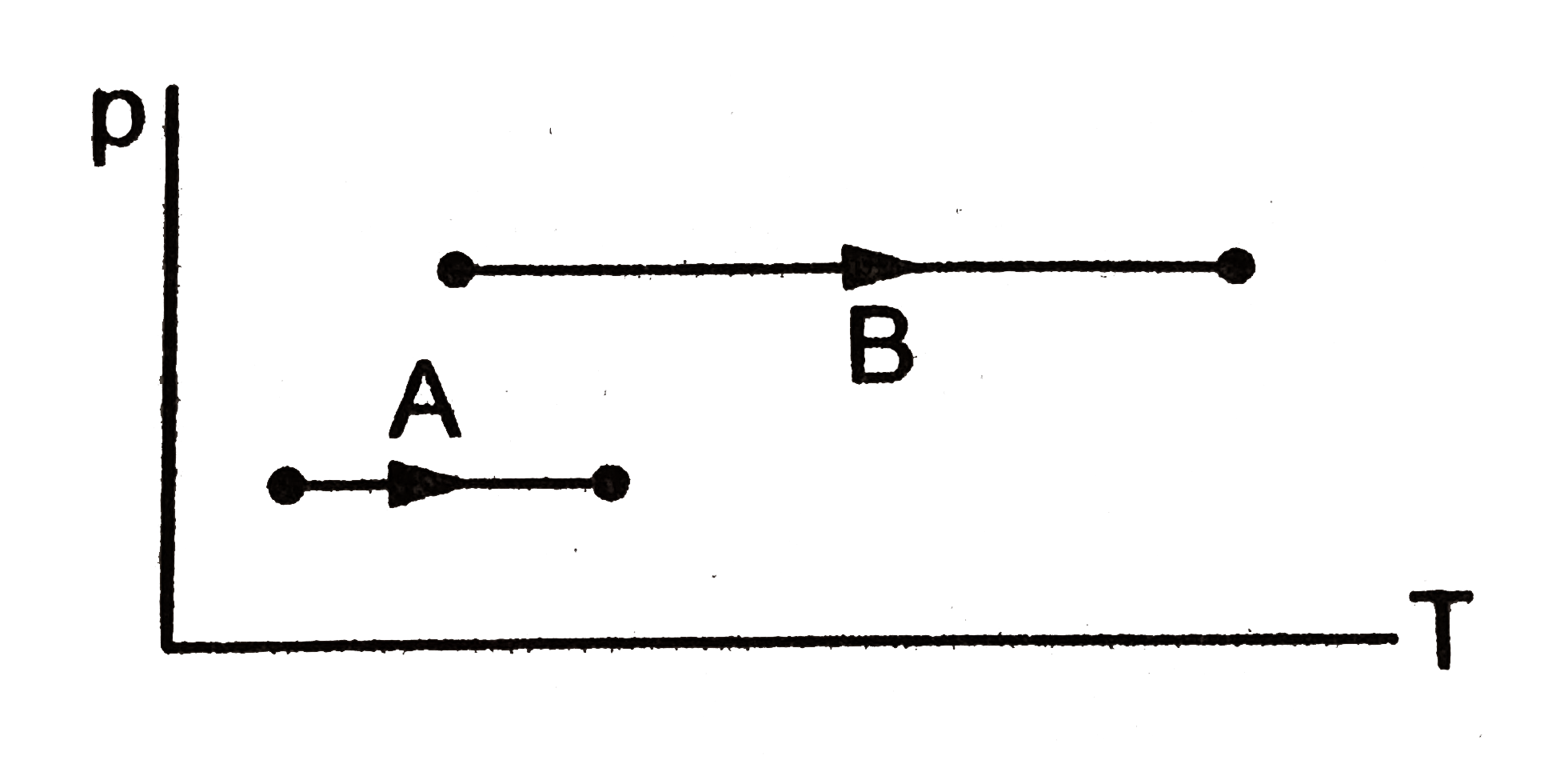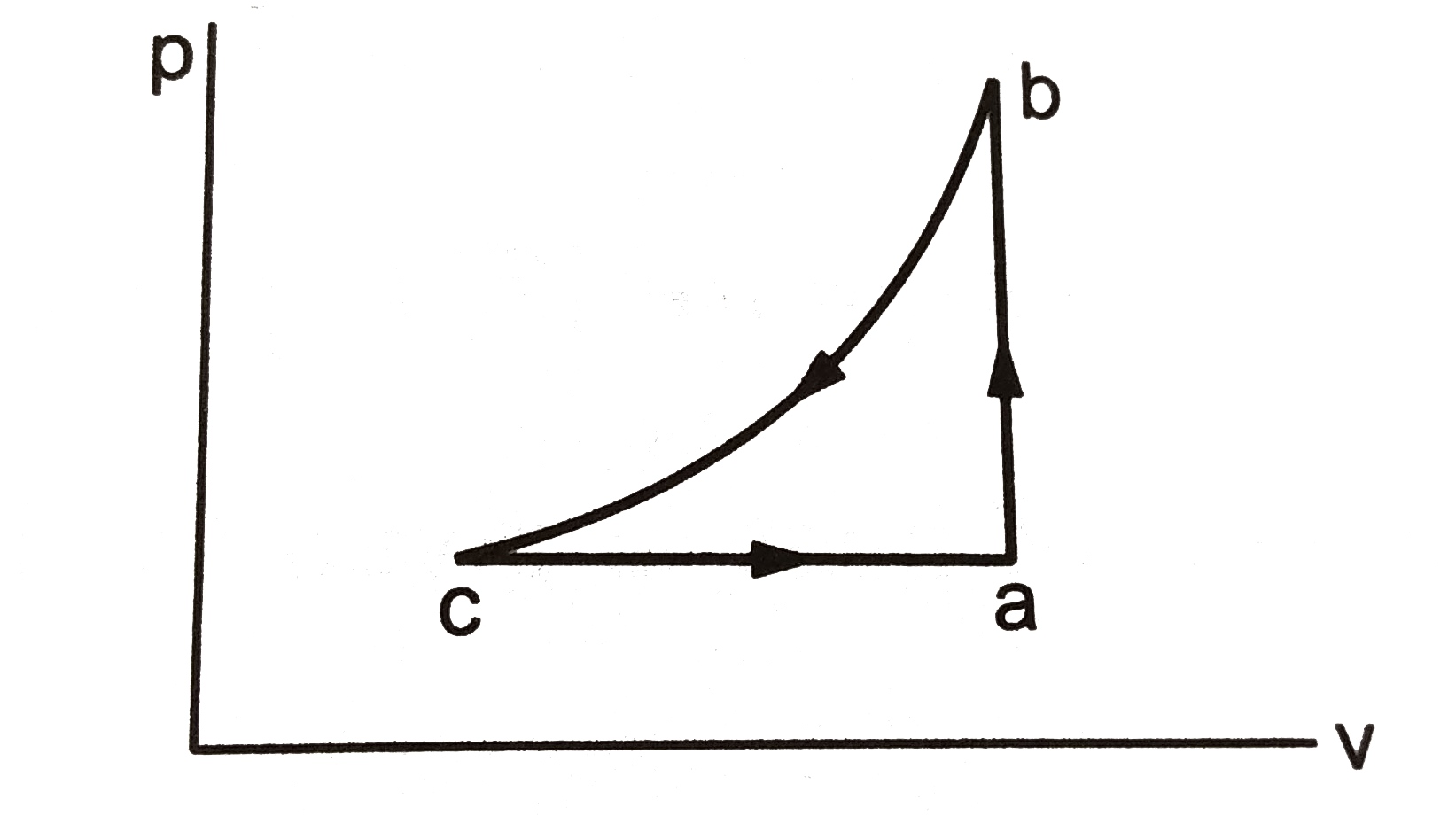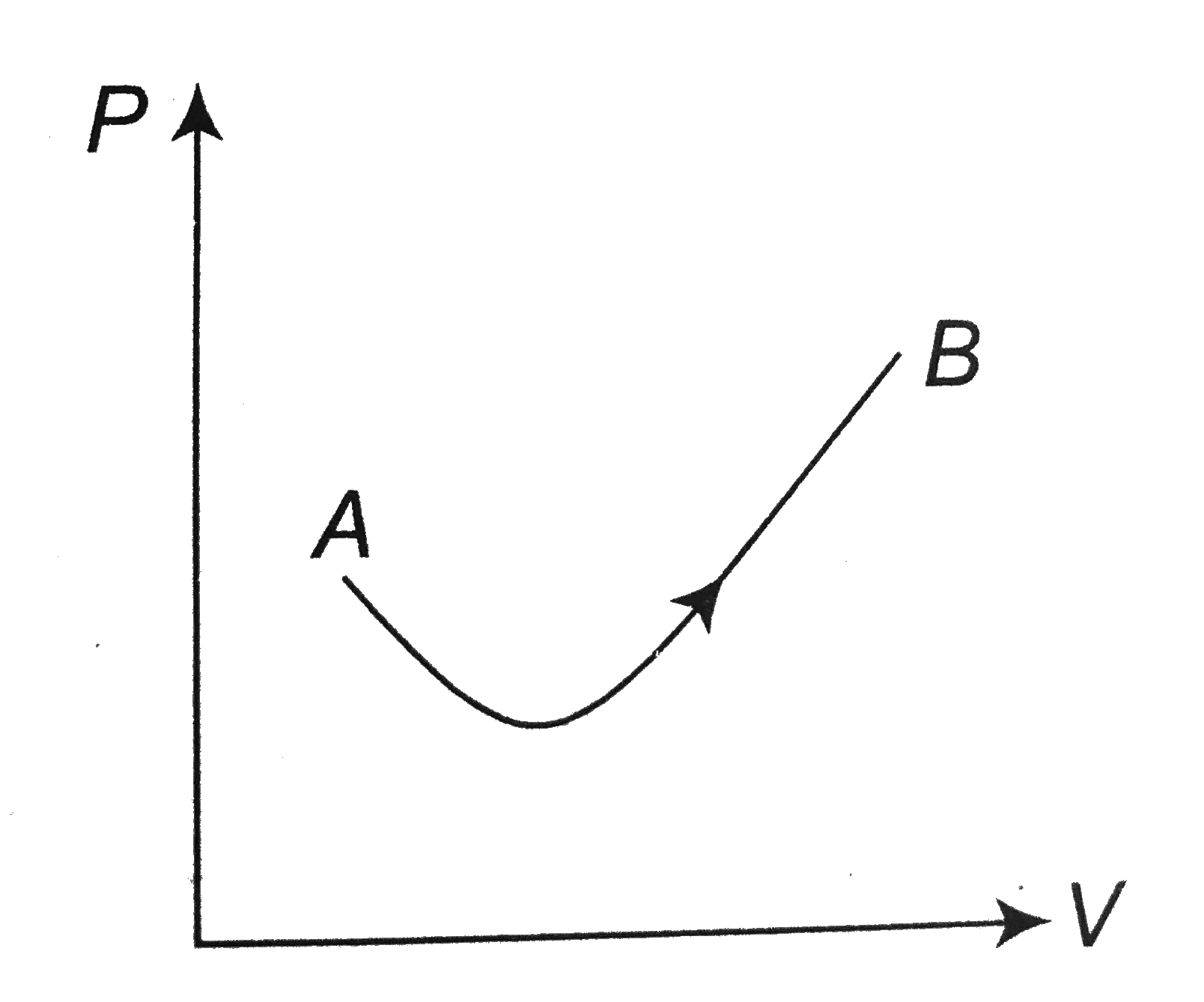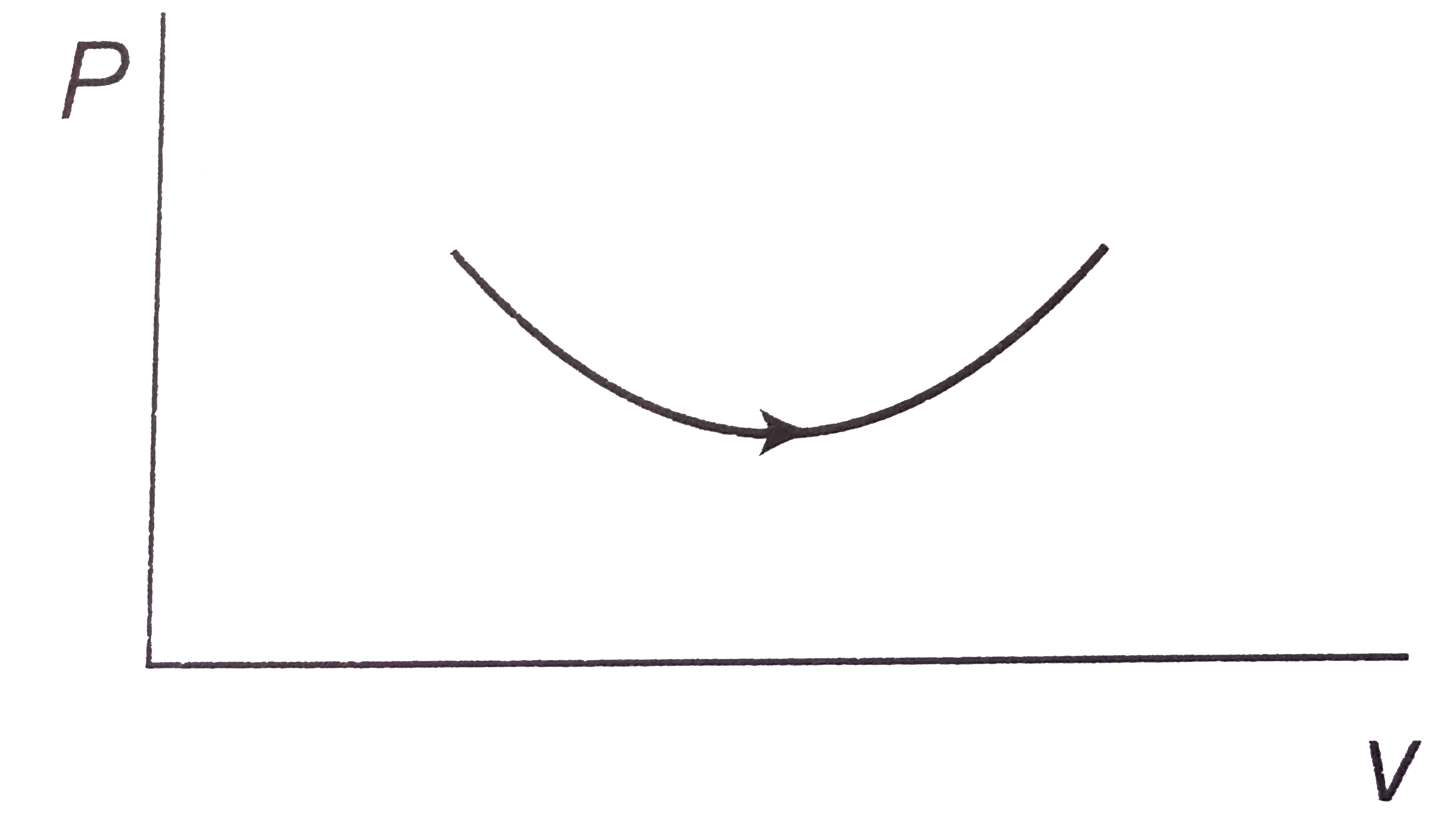consider two processes on a system as shown in fig
the volumes in the initial stage are the same in the two processes and the volume in the final stage are also the same.Let ΔW1andΔW2 be the work done by the system in the processes A and B respectively.
 Solution in Tamil
Solution in Tamil
a) ΔW1>ΔW2
b) ΔW1=ΔW2
c) ΔW1<ΔW2
d) nothing can be said about the relation between ΔW1andΔW2.
The correct Answer is:C
ΔW1<ΔW2
Topper's Solved these Questions
- BOOK - HC VERMACHAPTER - LAWS OF THERMODYNAMICSEXERCISE - Objective II5videos
LAWS OF THERMODYNAMICS
- BOOK - HC VERMACHAPTER - LAWS OF THERMODYNAMICSEXERCISE - Exercises22videos
LAWS OF THERMODYNAMICS
- BOOK - HC VERMACHAPTER - LAWS OF THERMODYNAMICSEXERCISE - Worked out Example11videos
LAWS OF THERMODYNAMICS
- BOOK - HC VERMACHAPTER - KINETIC THEORY OF GASESEXERCISE - All Questions120videos
KINETIC THEORY OF GASES
- BOOK - HC VERMACHAPTER - NEWTON'S LAWS OF MOTIONEXERCISE - Exercises42videos
NEWTON'S LAWS OF MOTION
Similar Questions
The pressure p and volume V of an ideal gas both increase in a process.
01:17View SolutionA thermally insulated, closed copper vessel contains water at 150C. When the vessel is shaken vigorously for 15 minutes, the temprature rises to 170C. The mass of the vessel is 100 g and that of the water is 200 g. the specific heat capacities of copper and water are 420Jkg−1K−1 and 4200Jkg−1K−1 respectively. negalect any thermal expansion.
(a) how much heat is transferred to the liquid-vessel system ?
(b)how much work has been done on this system?
(c ) how much is the increase in internal energy if the system ?02:49View SolutionA sample of an ideal gas is taken through the cyclic process abca . It absorbs 50 J of heat during the part ab, no heat during bc and rejects 70 J of heat during ca. 40 J of work is done on the gas during the part bc.(a) find the internal energy of the gas at b and c if it is 1500 J at a. (b) calculate the work done by the gas during the part ca.
 02:18View Solution
02:18View SolutionCalculate the rms speed of nitrogen at STP (pressure =1 atm and temperature =00C. The density of nitrgoen in these conditions is 1.25kgm−3
01:26View SolutionA block of mass 2 kg placed on a long frictionless horizontal table is pulled horizontally by a constant foerce F. It is found to move 10 m in the first two seconds. Find the magnitude of F.
02:14View Solutionconsider the processes on a system shown in. during the processes,the work done by the system
05:44View Solutionconsider two processes on a system on a system as shown in
the volumes in the initial states are the same in the two processes and the volume in the final states are also the same.Let ΔW1andΔW2 be the work done by the sustem in the processes A and B respectively.
 03:24View Solution
03:24View SolutionThe final volume of a system is equal to the initial volume in a certain process. Is the work done by the system necessarily zero? Is it necessarily nonzero?
02:57View SolutionConsider a process shown in the figure. During this process the work done by the system
 05:13View Solution
05:13View Solution
Consider the process on a system shown in figure. During the process, the work done by the systemView SolutionConsider the two process on a system as shown in figure. The volumes in the initial state and in the final state are the same in the two process A and B. If W_(1) and W_(2) be the work done by the system in the processes A and B respectively then-
02:08View SolutionConsider the process on a system as shown in the figure. During the process, the work done by the system
 View Solution
View SolutionIn a process on a system, the initial pressure and volume are equal to final pressure and volume, then
View SolutionThe final volume of a system is equal to the initial volume in a certain process. Is the work done by the system necessarily zero? Is it necessarily nonzero?
02:49View SolutionIn a process on a system, the initial pressure and volume are equal to the final pressure and volume.
01:10View SolutionConsider the process on a system shown in figure. During the process, the work done by the system
02:19View Solution

